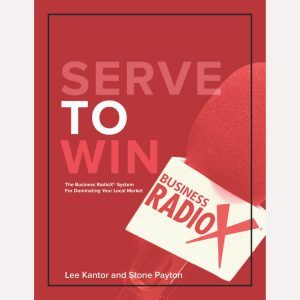
Stone Payton: [00:00:00] Welcome back to Business RadioX Pro Tips. Lee Kantor and Stone Payton here with you this afternoon. We are doing our Show Concept Meeting Series. Lee, we’ve talked about opening the meeting. We’ve talked about painting the room. And, now, it’s time to get into the conversation about return on investment, ROI. Talk us through that a little bit.
Lee Kantor: [00:00:22] Well, this is a key part of this because this is where you know if this is going to work out financially for you and the prospect. This is kind of where the rubber hits the road. At this point, this is when you want to really understand the lifetime value or the value, annual value of a client to your prospect. And you’ve got to know this because if that number is too low, it’s not going to work out. It’s not going to make financial sense for them to invest the money and time required in order to do a radio show.
Lee Kantor: [00:00:56] So, I’ll talk about what we do in our studio here and the numbers we use, but every studio has a different way of doing this, and they have a different, you know, financial number they’re looking for. And this helps inform you, really, about who the prospects for your studio are. So, it’s very — it’s at the heart of the business part of Business RadioX.
Lee Kantor: [00:01:17] So, now, what we do is the numbers that we use are $1000 a month for a monthly show. That’s, usually, the starting point that we’re looking at. So, we know that going in, and we know that if they pay $5000 upfront, they can get six months of a show. So, therefore, annually, the commitment is about $10,000 to have a monthly series or show here at at the Sandy Springs Business RadioX.
Lee Kantor: [00:01:45] So, we know that going in. The customer doesn’t know that. So, we have to ascertain from them by asking them, “What is the lifetime value of a customer? How much money do you normally make if you can turn a prospect into a customer? And engagement, how much is an engagement worth?” We want to know those type — we ask those type of questions to find out that information.
Lee Kantor: [00:02:07] Now, if they tell me that a typical engagement or an average engagement is $10,000 or more, then I feel that we are a very good solution for them and that we can help them make that happen because I feel very confident that we’re going to get the right people in the room for them, and then they have to believe in this statement. When I say, “If I can put you in front of 10, 20, 30 of your best prospects in a year, is that going to move the needle in your business?” And if they know that they just have to make one sale in a year, then it seems like a no-brainer. They believe that in one year’s time doing this show, which they already know they like and had fun doing as a guest, they’re going to get a lot of content, they’re going to meet a lot of people that are important to them, they’re going to serve the ecosystem. And if they can believe they’re going to sell one thing to somebody, then this seems very doable. It seems like it’s almost a no-brainer at this point.
Lee Kantor: [00:03:07] You mentioned a moment ago that you got to know this. And you do, but you don’t get to tell it. In fact, it is so much more powerful if you get them to tell it. Look, I’ll tell you again, I tell every one of them, this thing of ours, it works. It always works. It never doesn’t work. So, what we do is going to work. The question is, is it going to, as Lee puts it, move the needle in their business? That’s a math question. Put it to them. The return on investment, it can be absolutely ridiculous, but you don’t have to tell them. You can ask them and let them tell you.














